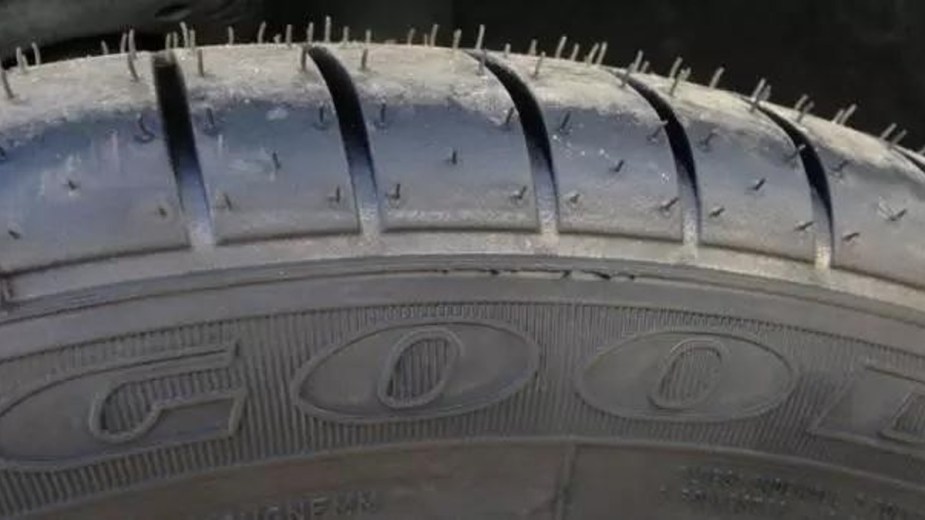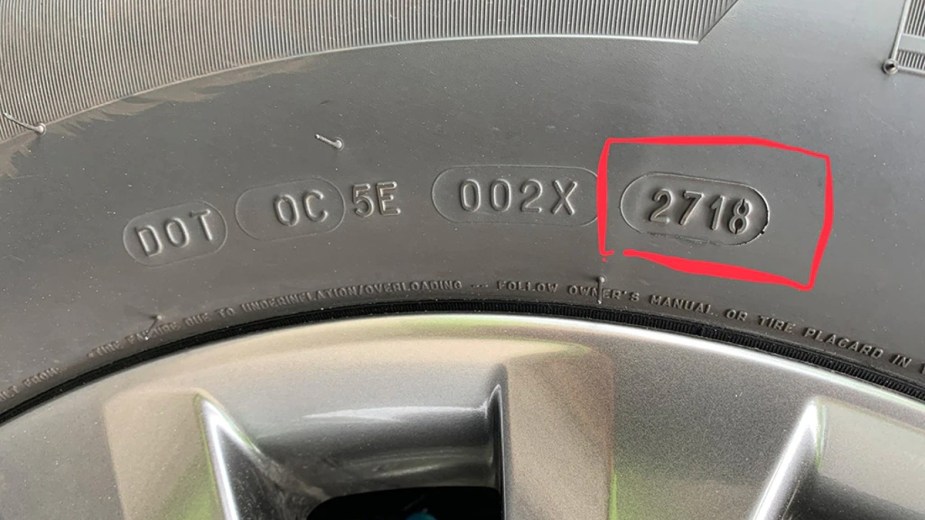
Why Do Tires Have Hairs?
Have you ever noticed the rubber nubs covering most of the tires on your car? These “tire hairs” are a mystery to some while sensible to those in the tire industry. Do these little rubber hairs have a purpose? Are they supposed to be on your tires? Do they have an official name? We’ve got the answers for you.
Why do tires have small rubber hairs covering them?

The rubber hairs on tires are a product of the manufacturing process. The tire is placed in a tire mold for shaping and marking. The heated rubber expands to fill the mold and take on the tread pattern. This process presents a rise of air bubbles forming between the rubber and the mold, which would prevent the tire from forming correctly.
To fix the problem with air bubbles, tire manufacturers add small holes in the mold to allow the excess air to escape from the mold. When this air escapes, the air and a small amount of rubber escape out of these holes, creating the small nubs you see on the tires.
Do these tire hairs have an official name?
Tire hairs sounds a lot more friendly than the official name of these little rubber nubs which is tire vent spews. Other names used for these items are sprue nubs, tire nibs, gate marks, or nippers.
What are some common misconceptions about the rubber hairs on tires?

Some people believe the tire vent spews impact your driving performance, tell about the age of a tire, or have other misconceptions about these little items. Toyo Tires tells us some of the common myths associated with them:
- They are a good way to check the age and condition of a tire
- They need to be removed
- They should never be removed
- They are ugly
All of these are misconceptions. Of course, the ugly part is subjective.
Should you remove tire vent spews from your tires?
Now that we’ve answered why do tires have hairs, the next logical question is whether or not you should remove them. This is entirely a matter of personal preference and taste. The tire vent spews serve no practical purpose once the tire is out of the mold during manufacturing.
If you want to remove them, it’s best to do so with your hands, which some people find to be very therapeutic.
What does a tire date code tell you?

Let’s add another piece of tire information with something that actually matters. Tire date codes indicate the manufacture date of the tire. The last four numbers represent that date. The first two numbers in a tire date code indicate the week, and the last two the year. A date code of 2910 indicates a tire manufactured during the 29th week of 2010.
Most manufacturers recommend driving on tires that are less than six years old. This means tires have a date code for when they were made and an expiration date of six years from said date.
Next, learn if Wal-Mart has free air for your tires, or learn more about how tires are made in this video below:



